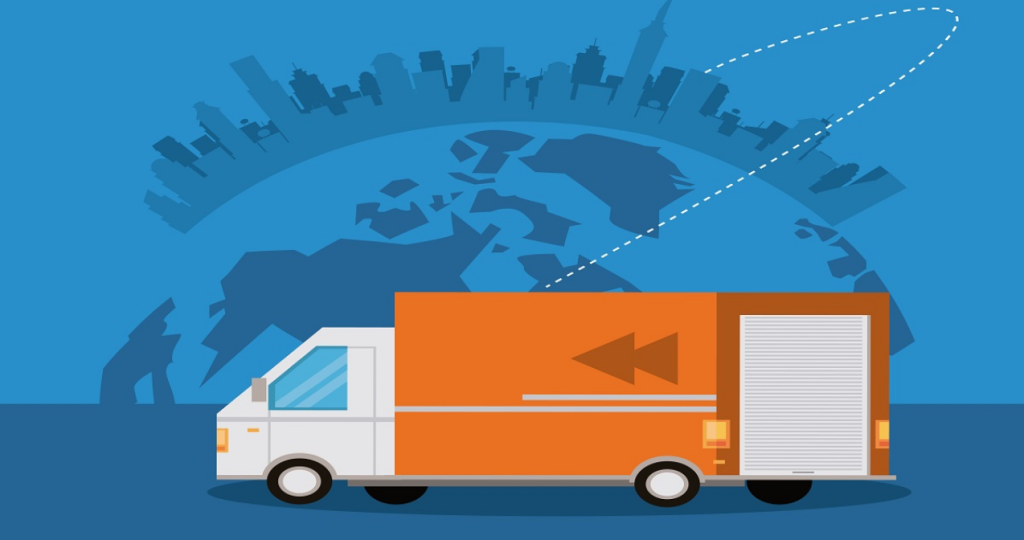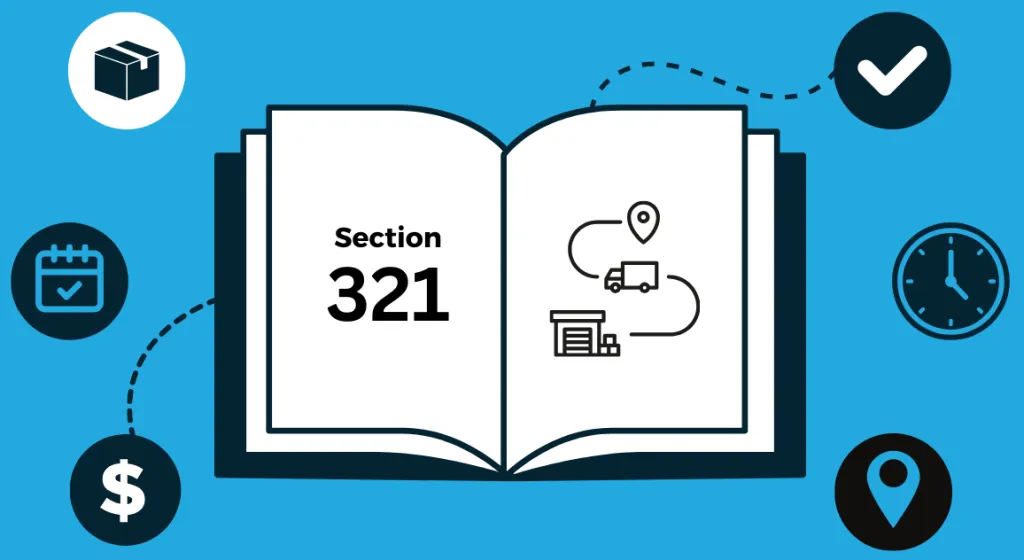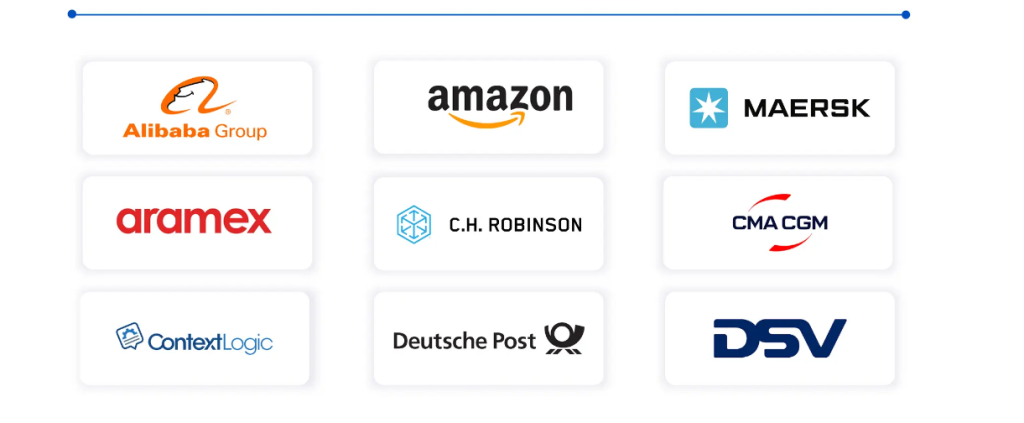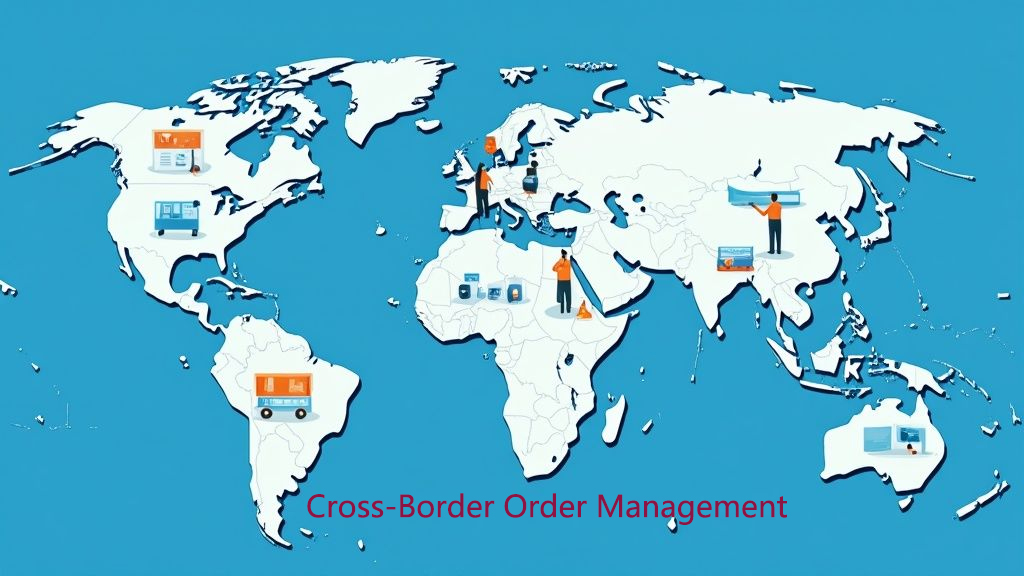Why Cross-Border Order Management Is Critical for Global Retailers
Global retail is experiencing significant growth in cross-border e-commerce. According to Precedence Research, the market is expected to reach $5.51 trillion by 2025 and grow to $20.07 trillion by 2034, with a compound annual growth rate (CAGR) of 15.44%. As internet access and smartphone use increase, cross-border e-commerce is expanding rapidly.

However, managing cross-border orders presents significant challenges for global retailers. Issues like fluctuating exchange rates, complex regulations, and shipping logistics can affect profitability and the customer experience.
This blog explains why a well-managed cross-border order management system (OMS) is key to success in global retail. We’ll explore a cross-border OMS’s main challenges and essential features and how businesses can overcome these hurdles.
Unique Challenges of Cross-Border Orders
Managing cross-border orders is not as simple as processing domestic sales. Retailers must contend with several complexities that make these transactions more challenging. Here are some of the unique challenges faced by retailers:
Fragmented Logistics
Logistics is one of the most fragmented areas of cross-border commerce. Retailers must coordinate with multiple carriers across various countries, and the complexities increase during the “last-mile” delivery phase.
- Challenges: Different shipping regulations, customs clearance delays, and varying service quality levels from regional carriers make providing a seamless delivery experience challenging.
- For example, a brand shipping from China to Europe may need to use a series of carriers across different regions. However, without effective OMS, retailers could face delays in coordination, resulting in poor customer satisfaction.
Tariff and Compliance Risks
Tariffs, duties, and import taxes pose another challenge, with the potential for penalties if not managed correctly. Errors in product classification, such as incorrect HS (Harmonized System) codes or misdeclared product values, can result in delays, fines, and even confiscation of goods.
- Example: A well-known retailer mistakenly classified products incorrectly and had their goods seized by customs, resulting in delayed shipments and a loss of customer trust.
- Solution: An automated system integrating with a tariff calculator can help calculate accurate duties and taxes in real-time, avoiding these costly mistakes.
Payment and Currency Issues
Exchange rate fluctuations, international payment gateways, and localized payment methods complicate cross-border transactions. For instance, some regions, like Brazil, prefer alternative payment methods such as Boleto Bancário, while others prefer credit cards or PayPal.
- Challenges: Conversion fees and fluctuating exchange rates can lead to unexpected costs, and local payment preferences can reduce customer conversion rates.
- Solution: A centralized payment gateway that supports multiple currencies and payment methods can simplify this process and boost conversion.
Customer Experience Gaps
Cross-border shoppers often face challenges such as limited visibility into shipping progress, lengthy return processes, and unclear customs procedures, all affecting the customer experience.
- Challenges: A lack of real-time tracking, extended return processing times, and complicated return policies often frustrate international customers.
- Data Insight: According to research, 63% of cross-border consumers abandon future purchases due to poor return experiences.
- Solution: A cross-border OMS can integrate end-to-end visibility, enabling customers to track their orders from dispatch to delivery with transparent customs processes.
Key Features of a Cross-Border OMS
A cross-border OMS is the central hub for managing the entire lifecycle of international orders, from placement to delivery. Here are some essential features for managing cross-border orders efficiently:

Automated Tariff and Tax Calculation
With regulations changing frequently, having an automated system that can accurately calculate tariffs, taxes, and customs duties in real time is critical. Tools like Avalara can be integrated into an OMS to provide accurate landed cost calculations for every order.
- Benefit: Reduces the risk of incorrect tax filings and helps retailers provide transparent pricing to customers.
Multi-Warehouse and Carrier Optimization
A cross-border OMS should enable the retailer to select the optimal warehouse and shipping route based on proximity, cost, and shipping time.
- Example: A product shipped from China to Europe may be stored in a Poland-bonded warehouse to reduce shipping times and customs delays.
- Benefit: This optimizes the cost, speed, and reliability of fulfillment, ensuring faster deliveries and cost savings.
Unified Payment Gateway
A unified payment gateway that supports multiple payment methods and dynamic currency conversion (DCC) can handle the complexities of cross-border payments.
- Benefit: Reduces friction for international customers and eliminates the need for multiple payment integrations, leading to higher conversion rates.
End-to-End Visibility
One of the key benefits of a cross-border OMS is providing real-time visibility across the entire order process, from order creation to final delivery.
- Feature: Integrates logistics tracking, including customs clearance and shipping updates, ensuring that the retailer and customer can always track the order status.
- Benefit: Improves customer satisfaction by reducing the uncertainty and anxiety of waiting for cross-border orders.
Case Studies
Case 1: Fashion Brand SHEIN
SHEIN has successfully leveraged a cross-border OMS to streamline operations. By integrating a global network of over 1,000 suppliers and utilizing centralized inventory management, SHEIN could reduce its order-to-delivery cycle to just 7 days.
- Result: Faster delivery times, lower shipping costs, and a delighted global customer base.
Case 2: Beauty Brand
A global beauty brand implemented a cross-border OMS to automate returns processing, significantly reducing handling costs.
- Outcome: By automating cross-border return logistics, the brand reduced its return processing costs by 40%, leading to more efficient operations and a better customer experience.
How to Choose the Right Cross-Border OMS?
Selecting the right OMS for your business is crucial to overcoming the unique challenges of cross-border retail. Consider the following factors when choosing a solution:
Compliance Capabilities
Ensure that the OMS covers all the tax regulations and compliance standards for your target markets, such as the EU IOSS (Import One-Stop Shop) and US Section 321.
- Benefit: Avoids penalties and ensures that all imports comply with local regulations.

Scalability
The OMS should support expansion into emerging markets, especially those with unique requirements like Cash on Delivery in the Middle East.
- Benefit: Scalability allows you to enter new markets without worrying about system limitations.
Technical Integration
Ensure the OMS integrates smoothly with your existing systems, such as ERP systems (e.g., SAP) and e-commerce platforms like Shopify.
- Benefit: Seamless integration minimizes disruptions to current operations and reduces the need for additional IT resources.
Conclusion
In an increasingly globalized world, cross-border e-commerce presents both opportunities and challenges. A well-implemented cross-border OMS is essential for overcoming the complexities of logistics, compliance, payment systems, and customer experience. By leveraging the right OMS, retailers can streamline their operations, reduce costs, improve customer satisfaction, and position themselves for success in the growing global retail market.

With the global e-commerce market projected to grow significantly between 2025 and 2034, businesses must ensure they have the right tools to manage cross-border orders effectively and scale internationally.
Industry Insights
news via inbox
Nulla turp dis cursus. Integer liberos euismod pretium faucibua








